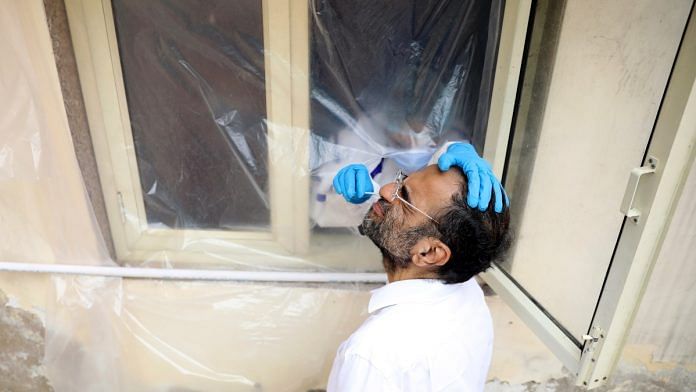Bengaluru: A new study from South Korea showed evidence that Covid-19 patients without symptoms carry comparable viral loads, and transmit in a similar manner and frequency as the symptomatic ones do.
Most of the theories on asymptomatic transmission have been based on anecdotal, not scientific evidence, so far. It was also speculated that since asymptomatic people might not cough or sneeze as much as symptomatic ones, they might not play as big a role in transmitting the virus.
The latest study, published in the journal JAMA Internal Medicine Thursday, offered the first scientific proof that asymptomatic individuals, who are in the phase of the disease where the virus is transmissible, transmit as much as symptomatic individuals do.
The study is also among the first few to academically distinguish between pre-symptomatic and asymptomatic patients.
It also confirmed that an estimated 30 per cent of those diagnosed with Covid-19 never develop symptoms, as has been found in previous studies.
Also read: Why asymptomatic spread of Covid has become so bizarrely controversial
The study
The team from Soonchunhyang University Seoul Hospital in South Korea studied samples collected from 303 Covid-positive patients — 193 symptomatic and 110 asymptomatic between 6-26 March at an isolation ward in Cheonan. The median age of participants was 25, and two-thirds were women. Only 12 patients had comorbidities.
Over the course of the study, 89 of the 303 (or 30 per cent) remained asymptomatic, while 21 had been pre-symptomatic, developing symptoms of Covid-19 later. Among those who displayed symptoms, the most common ones were cough, nasal congestion, sore throat, loss of smell, and diarrhoea.
Comparing viral loads, on days 8, 9, 10, 15, 16, 17, 18, and 19 of isolation after testing positive, in the upper and lower respiratory tracts of all infected patients, the team found that the quantities of virus were comparable between symptomatic and asymptomatic individuals.
However, asymptomatic individuals were able to test negative sooner, which is when both upper and lower tract samples tested negative via RT-PCR tests. They became free of the virus on day 17, as opposed to symptomatic ones, who typically did so on days 19 or 20.
On day 14, 33.7 per cent of those without symptoms tested negative compared to 29.6 per cent of symptomatic patients. By day 21, 75.2 per cent of asymptomatic patients tested negative compared to 69.9 per cent of those with symptoms.
Limitations
The study is, however, not without its disadvantages.
It was a retrospective, observational study, which means that the analysis was performed on existing data instead of observing patients over a period of time.
The data gathered also depends on the quality of testing — while South Korea is considered to have tested and isolated very efficiently, the patterns in observed data might not hold true for all countries due to variation in testing and isolation of asymptomatic patients.
“Many individuals with SARS-CoV-2 infection remained asymptomatic for a prolonged period and viral load was similar to that in symptomatic patients,” wrote the authors in the study. “Therefore, isolation of infected persons should be performed regardless of symptoms.
“Because transmission by asymptomatic patients with SARS-CoV-2 may be a key factor in community spread, population-based surveillance and isolation of asymptomatic patients may be required,” they added.
Also read: Asymptomatic Covid-19 patients can still develop lung damage






